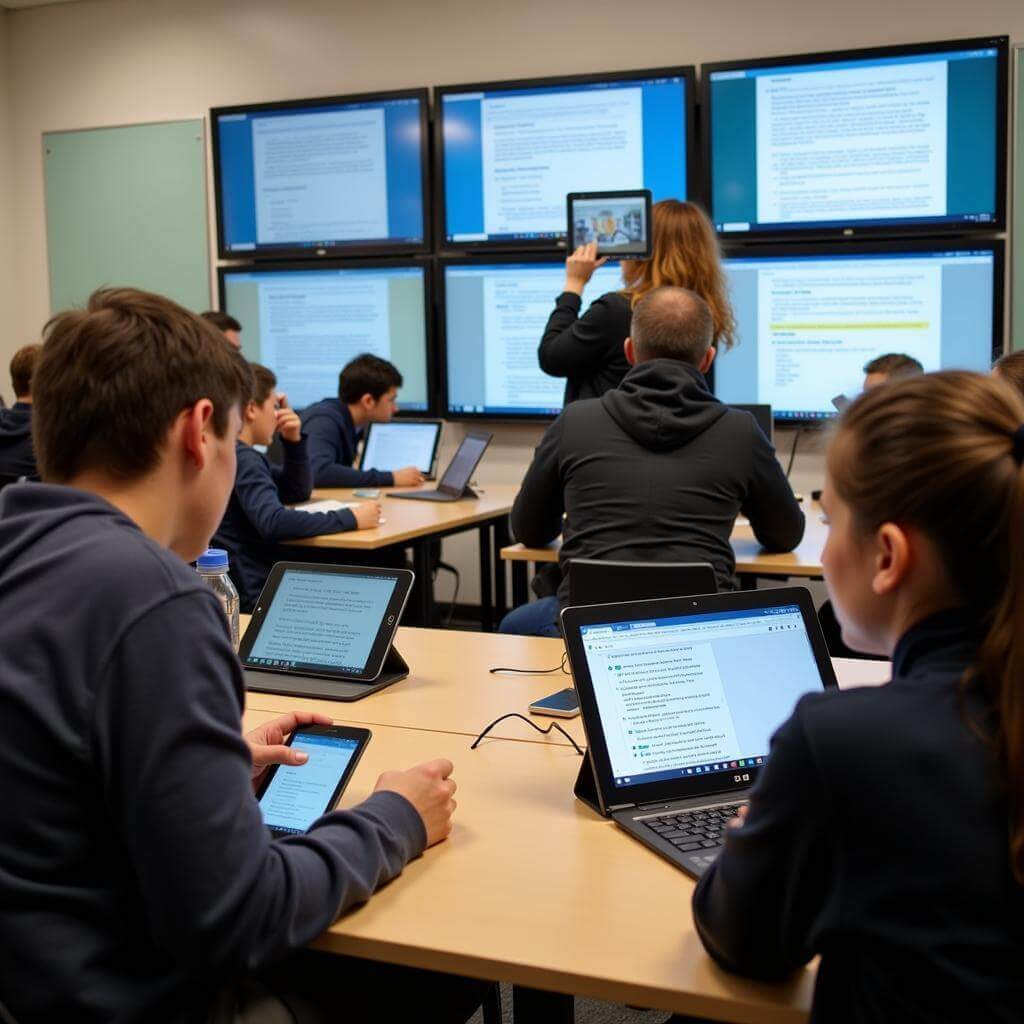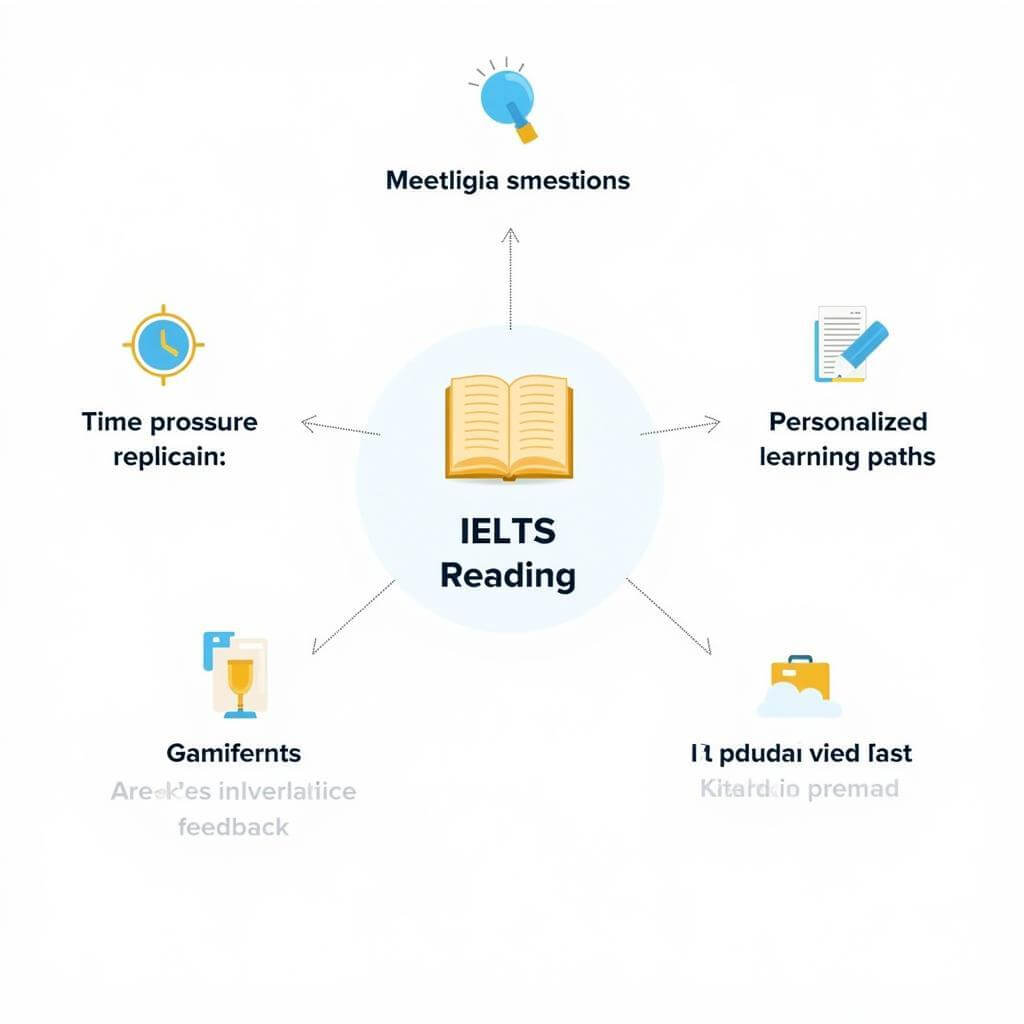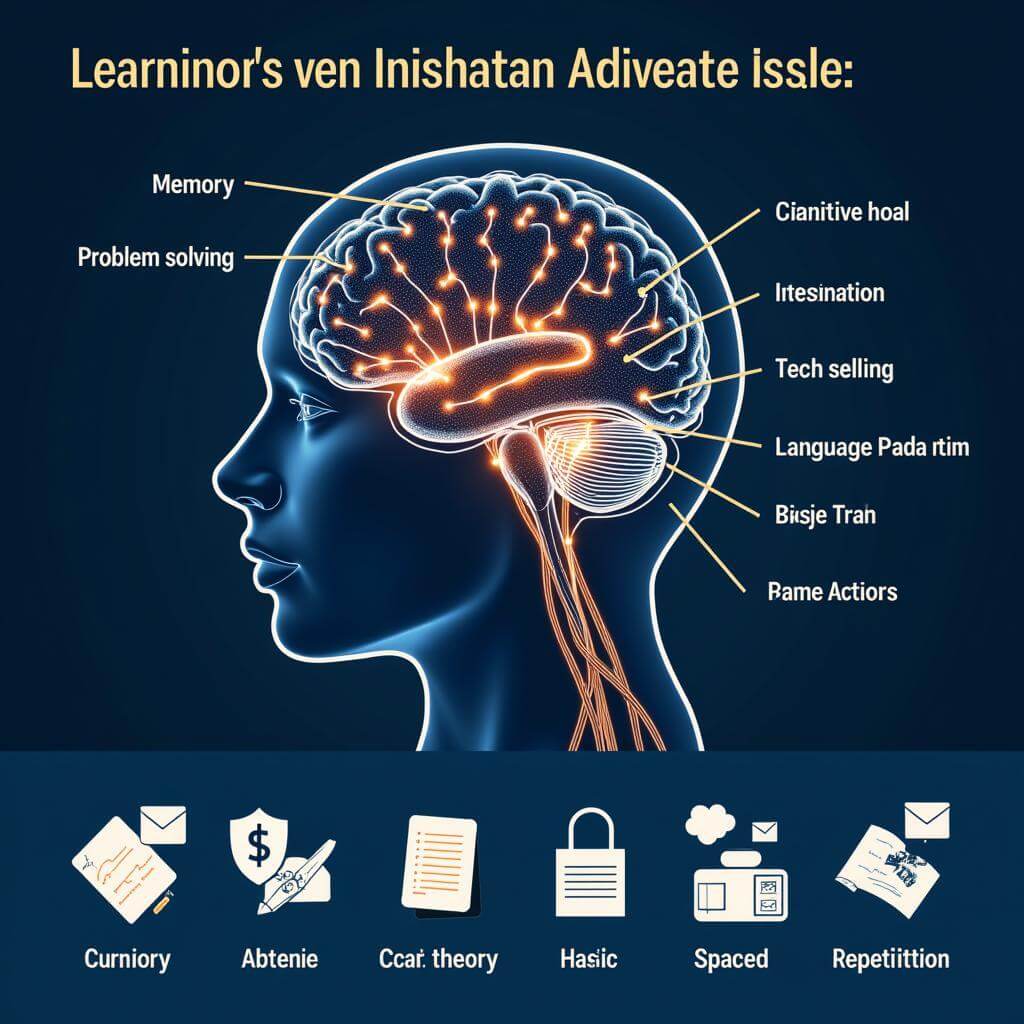In today’s digital age, learning simulations have become increasingly popular in education, particularly in IELTS preparation. These interactive tools are revolutionizing the way students approach the challenging IELTS Reading section. Let’s explore how learning simulations are improving student outcomes through a comprehensive IELTS Reading practice test focused on this innovative educational approach.
Passage 1 – Easy Text
The Rise of Learning Simulations in Education
Learning simulations have gained significant traction in recent years as educators seek more engaging and effective ways to prepare students for real-world challenges. These interactive tools provide a virtual environment where learners can practice skills and apply knowledge in scenarios that closely mimic actual situations they may encounter.
The use of virtual reality in cultural simulations has particularly enhanced the learning experience for students preparing for international exams like IELTS. By immersing themselves in simulated scenarios, learners can develop critical thinking skills and improve their ability to process information quickly – crucial abilities for success in the IELTS Reading section.
One of the key advantages of learning simulations is their ability to provide immediate feedback. This instant response allows students to identify areas for improvement and adjust their strategies in real-time. As a result, learners can make rapid progress and build confidence in their abilities.
Moreover, simulations offer a safe space for students to experiment and make mistakes without real-world consequences. This low-stakes environment encourages risk-taking and fosters a growth mindset, essential attributes for academic success.
 Learning simulations enhancing student engagement in IELTS Reading
Learning simulations enhancing student engagement in IELTS Reading
Questions 1-5
Do the following statements agree with the information given in the passage? Write
TRUE if the statement agrees with the information
FALSE if the statement contradicts the information
NOT GIVEN if there is no information on this
- Learning simulations have become more popular in education recently.
- Virtual environments in simulations are exactly the same as real-world situations.
- Immediate feedback is a significant benefit of learning simulations.
- Students can only use learning simulations under teacher supervision.
- Simulations help students develop a growth mindset.
Questions 6-10
Complete the sentences below.
Choose NO MORE THAN TWO WORDS from the passage for each answer.
- Learning simulations provide a __ environment for practicing skills.
- Virtual reality simulations can help students improve their __ skills.
- Simulations allow learners to make progress and build __ in their abilities.
- The low-stakes environment of simulations encourages students to take __.
- Simulations offer a space where students can make mistakes without __ consequences.
Passage 2 – Medium Text
Enhancing IELTS Reading Preparation through Simulation Technology
The integration of simulation technology in IELTS Reading preparation has marked a significant shift in how students approach this challenging component of the test. Traditional methods of preparation, while still valuable, are now being supplemented with innovative digital tools that offer a more immersive and interactive learning experience.
One of the primary advantages of using simulations for IELTS Reading practice is the ability to replicate the time pressure and format of the actual test. Students can engage with realistic passages and questions, developing crucial time management skills and familiarizing themselves with the various question types they will encounter. This targeted practice helps reduce test anxiety and builds confidence, two critical factors in achieving a high score.
Moreover, advanced simulation platforms can adapt to individual learner needs, providing personalized learning paths. By analyzing performance data, these systems can identify areas of weakness and automatically generate practice materials that focus on improving those specific skills. This level of customization ensures that study time is used efficiently, maximizing the potential for improvement.
How educational technology is changing student engagement is particularly evident in the realm of IELTS preparation. Simulations often incorporate gamification elements, such as progress tracking, achievements, and competitive leaderboards. These features tap into students’ intrinsic motivation, making the learning process more enjoyable and encouraging consistent practice.
Another significant benefit of simulation technology is its ability to provide instant, detailed feedback. Unlike traditional practice methods, where feedback might be delayed or limited, simulations can offer immediate explanations for incorrect answers, suggest alternative strategies, and track progress over time. This rapid feedback loop accelerates the learning process and allows students to make real-time adjustments to their approach.
 IELTS Reading simulation technology benefits
IELTS Reading simulation technology benefits
Questions 11-14
Choose the correct letter, A, B, C, or D.
-
According to the passage, simulation technology in IELTS Reading preparation:
A) Has completely replaced traditional methods
B) Is used alongside traditional preparation techniques
C) Is less effective than traditional methods
D) Is only used by a small number of students -
One of the main benefits of using simulations for IELTS Reading practice is:
A) It makes the test easier
B) It allows students to avoid difficult questions
C) It helps students manage their time better
D) It guarantees a high score -
Advanced simulation platforms can:
A) Predict a student’s final IELTS score
B) Replace the need for human teachers
C) Create personalized learning materials
D) Teach students new vocabulary -
Gamification elements in IELTS Reading simulations:
A) Distract students from serious study
B) Are only effective for younger learners
C) Increase student motivation and engagement
D) Are not widely used in educational technology
Questions 15-20
Complete the summary below.
Choose NO MORE THAN TWO WORDS from the passage for each answer.
Simulation technology has revolutionized IELTS Reading preparation by offering an 15__ and interactive learning experience. These tools help students develop 16__ skills and become familiar with different question formats. Advanced platforms provide 17__ learning paths by analyzing student performance. The incorporation of 18__ elements makes practice more enjoyable and motivates consistent study. Perhaps most importantly, simulations offer 19__ feedback, allowing students to make 20__ adjustments to their learning strategies.
Passage 3 – Hard Text
The Cognitive Science Behind Learning Simulations and Their Impact on IELTS Reading Performance
The efficacy of learning simulations in improving IELTS Reading scores is not merely anecdotal; it is firmly grounded in cognitive science principles. Understanding the neurocognitive mechanisms at play provides insight into why these digital tools are so effective in enhancing reading comprehension and test-taking strategies.
At the core of simulation effectiveness is the concept of cognitive load theory, first proposed by John Sweller in the 1980s. This theory posits that our working memory has a limited capacity for processing information. Traditional learning methods often overwhelm this capacity, leading to cognitive overload and diminished learning outcomes. Learning simulations, however, can be designed to optimize cognitive load by presenting information in manageable chunks and in varied formats (visual, auditory, and interactive), thus facilitating more efficient information processing and retention.
Moreover, simulations leverage the power of active learning, a pedagogical approach that engages students directly in the learning process. By requiring learners to make decisions, solve problems, and receive immediate feedback, simulations activate multiple neural pathways. This multi-modal engagement enhances synaptic plasticity – the brain’s ability to form and reorganize synaptic connections – which is crucial for long-term learning and skill development.
The impact of virtual learning on international student experiences extends to IELTS preparation, where simulations can create immersive environments that mimic the pressure and complexity of the actual test. This exposure activates the brain’s stress response systems in a controlled manner, allowing students to develop coping mechanisms and improve performance under pressure. Research in neuroscience has shown that moderate levels of stress can actually enhance memory formation and recall, a phenomenon known as the “Yerkes-Dodson law.”
Furthermore, the gamification elements often incorporated into learning simulations trigger the brain’s reward system by releasing dopamine. This neurotransmitter not only creates a sense of pleasure but also plays a crucial role in motivation and reinforcement learning. By tapping into this neurochemical process, simulations can create a positive feedback loop that encourages continued engagement and practice.
Another critical aspect of learning simulations is their ability to provide spaced repetition, a learning technique that involves reviewing information at gradually increasing intervals. This method aligns with the brain’s natural forgetting curve and has been proven to significantly enhance long-term retention. In the context of IELTS Reading preparation, spaced repetition through simulations ensures that vocabulary, comprehension strategies, and time management skills are consistently reinforced over time.
The adaptivity of advanced learning simulations also aligns with the concept of the zone of proximal development (ZPD), introduced by psychologist Lev Vygotsky. By continuously adjusting the difficulty level based on the learner’s performance, simulations can maintain a state of optimal challenge, where the task is neither too easy nor too difficult. This sweet spot of difficulty is where the most significant learning gains occur, as it pushes learners to extend their capabilities without inducing frustration or boredom.
In conclusion, the integration of learning simulations in IELTS Reading preparation represents a synergy between educational technology and cognitive science. By harnessing the brain’s natural learning processes and optimizing cognitive resources, these tools offer a scientifically-grounded approach to improving reading comprehension, time management, and overall test performance. As research in neuroscience and educational psychology continues to advance, we can expect even more sophisticated and effective learning simulations to emerge, further revolutionizing the landscape of language testing preparation.
 Cognitive science behind learning simulations for IELTS Reading
Cognitive science behind learning simulations for IELTS Reading
Questions 21-26
Complete the summary below.
Choose NO MORE THAN TWO WORDS from the passage for each answer.
The effectiveness of learning simulations in IELTS Reading preparation is based on several cognitive science principles. Cognitive load theory suggests that simulations can optimize information processing by presenting content in 21__ and varied formats. The concept of 22__ is utilized in simulations, engaging students directly in problem-solving and decision-making. Simulations also create 23__ environments that activate the brain’s stress response systems in a controlled way, potentially enhancing memory formation according to the 24__. The incorporation of gamification elements triggers the brain’s 25__, releasing dopamine which aids in motivation and learning. Additionally, simulations can provide 26__, a technique that aligns with the brain’s natural forgetting curve to improve long-term retention.
Questions 27-30
Choose FOUR letters, A-G.
Which FOUR of the following are mentioned in the passage as benefits of learning simulations for IELTS Reading preparation?
A) They completely eliminate test anxiety.
B) They optimize cognitive load for better information processing.
C) They guarantee a perfect score on the IELTS Reading test.
D) They enhance synaptic plasticity through multi-modal engagement.
E) They replace the need for human instructors entirely.
F) They provide adaptive difficulty levels based on individual performance.
G) They make the IELTS Reading test obsolete.
Questions 31-35
Do the following statements agree with the claims of the writer in the passage? Write
YES if the statement agrees with the claims of the writer
NO if the statement contradicts the claims of the writer
NOT GIVEN if it is impossible to say what the writer thinks about this
- Learning simulations are more effective than all other forms of IELTS preparation.
- Moderate levels of stress can have a positive effect on memory formation and recall.
- Gamification elements in simulations can create a positive feedback loop for learning.
- Spaced repetition through simulations is only effective for vocabulary learning.
- The zone of proximal development concept is relevant to the design of learning simulations.
Questions 36-40
Complete the sentences below.
Choose NO MORE THAN TWO WORDS from the passage for each answer.
- Cognitive load theory was first proposed by __ in the 1980s.
- Simulations activate multiple neural pathways through __ learning.
- The “Yerkes-Dodson law” relates to the effect of __ on memory and performance.
- Dopamine plays a crucial role in __ and reinforcement learning.
- Advanced learning simulations can maintain a state of __ challenge for optimal learning.
Answer Key
Passage 1
- TRUE
- FALSE
- TRUE
- NOT GIVEN
- TRUE
- virtual
- critical thinking
- confidence
- risks
- real-world
Passage 2
- B
- C
- C
- C
- immersive
- time management
- personalized
- gamification
- instant
- real-time
Passage 3
- manageable chunks
- active learning
- immersive
- Yerkes-Dodson law
- reward system
- spaced repetition
- B, D, F
- B, D, F
- B, D, F
- B, D, F
- NOT GIVEN
- YES
- YES
- NO
- YES
- John Sweller
- active
- stress
- motivation
- optimal
How blended learning is addressing cultural diversity in classrooms is another aspect worth exploring as we consider the broader implications of educational technology on learning outcomes. The principles discussed in this IELTS Reading practice can be applied to various educational contexts, demonstrating the wide-reaching impact of innovative learning approaches.
As we’ve seen through this comprehensive IELTS Reading practice test, learning simulations are not just tools for test preparation; they represent a fundamental shift in how we approach education and skill development. By understanding and leveraging the cognitive science behind these technologies, students can significantly enhance their IELTS Reading performance and develop valuable skills that extend far beyond the test itself.
How online education is democratizing learning is evident in the accessibility of such advanced learning tools. As these technologies continue to evolve, they promise to make high-quality IELTS preparation available to a broader audience, potentially leveling the playing field for test-takers worldwide.


